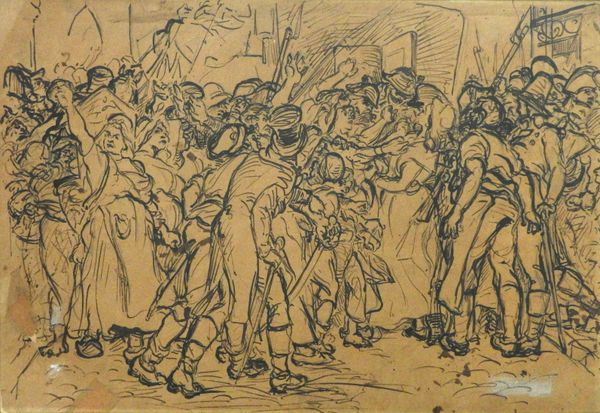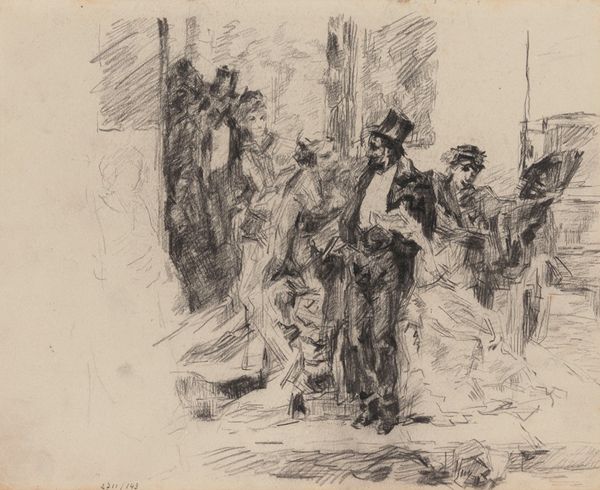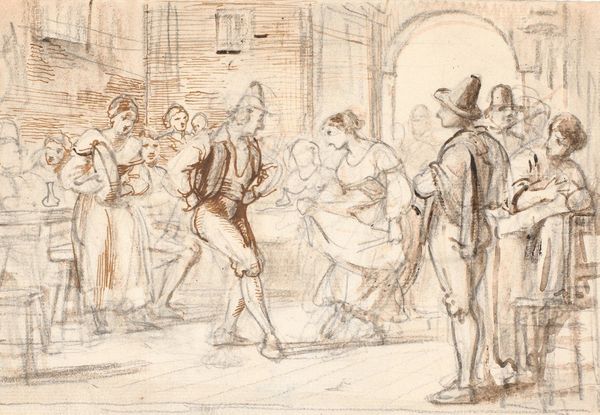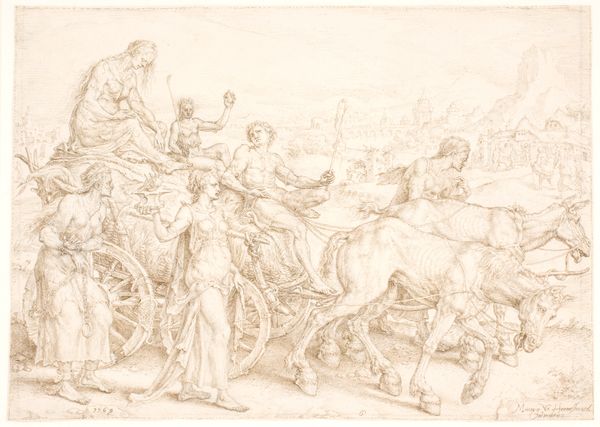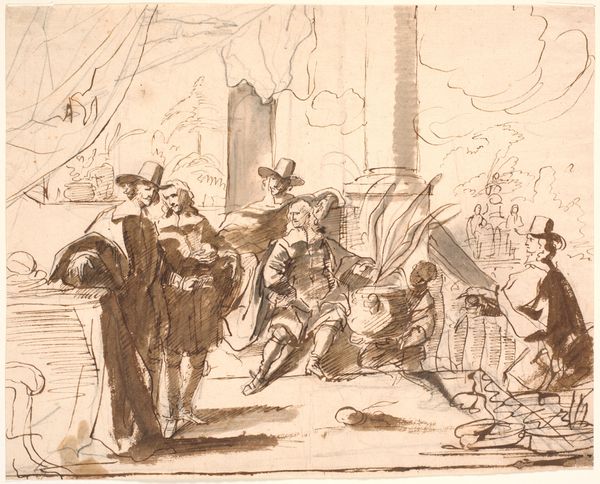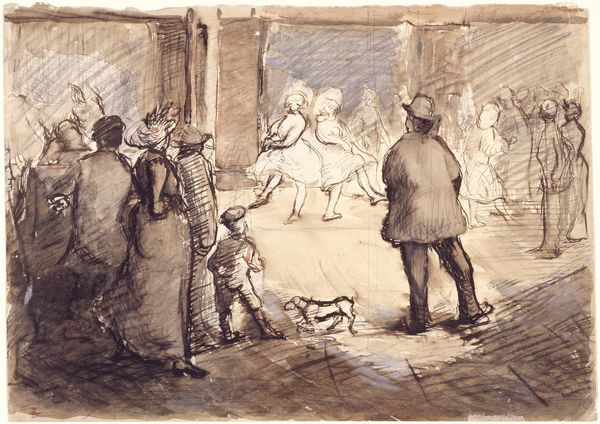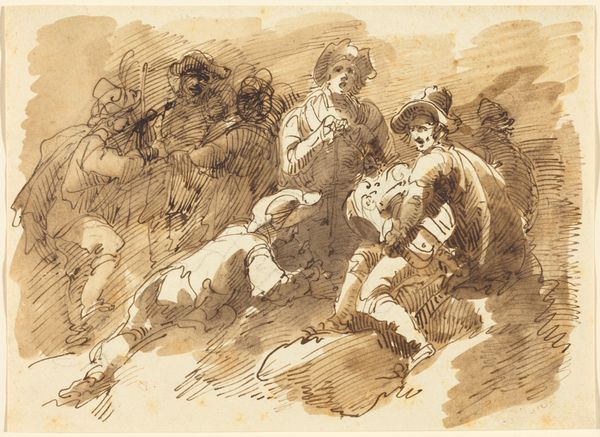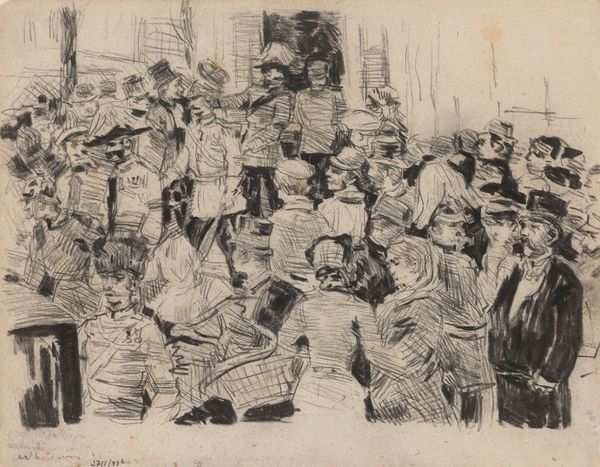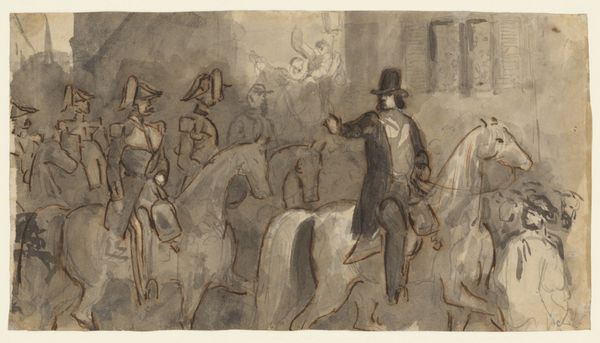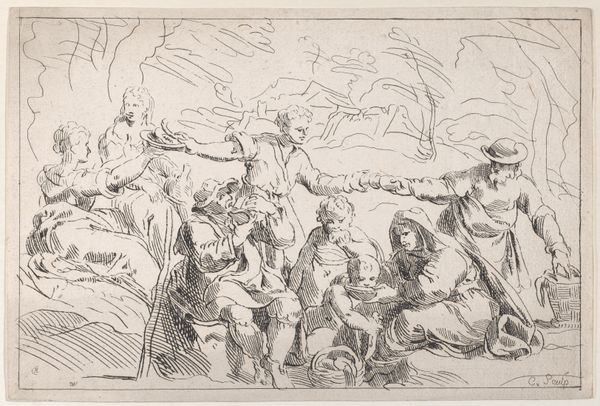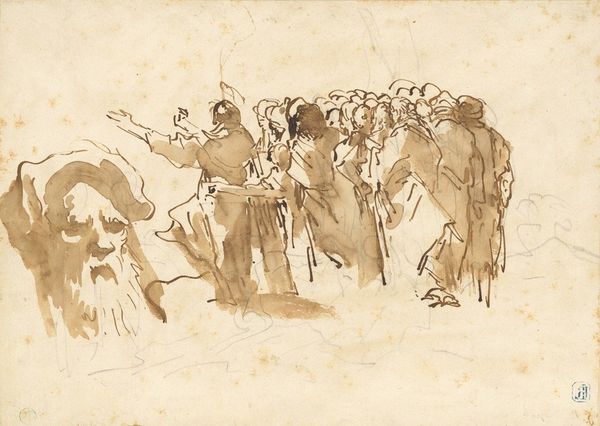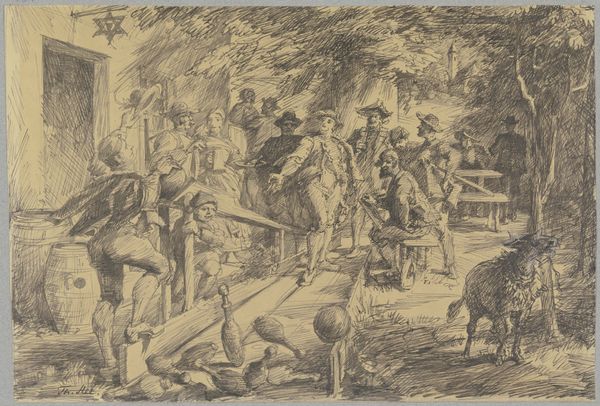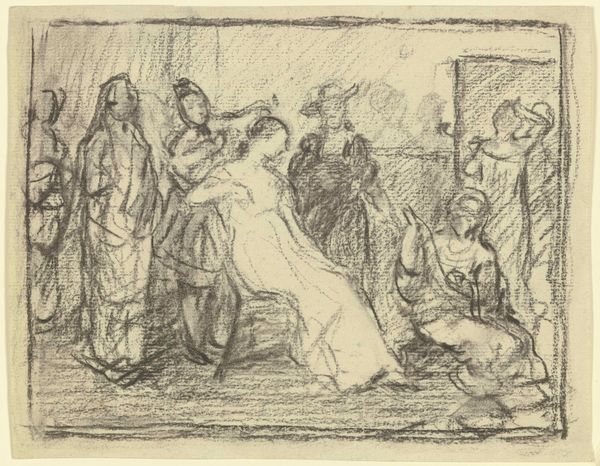
drawing, ink
#
drawing
#
baroque
#
figuration
#
ink
#
ink drawing experimentation
#
history-painting
Dimensions: 11 7/8 x 17 3/8 in. (30.16 x 44.13 cm) (sheet)
Copyright: Public Domain
Editor: So, we’re looking at "The Death of Lucretia," an 18th-century ink drawing by Pietro Fancelli, housed at the Minneapolis Institute of Art. There's so much movement, so much implied violence in those washes of brown ink. It feels quite theatrical, almost like a stage production. What strikes you most about this piece? Curator: Well, let's think about the material circumstances of its production. The drawing itself – the relative cheapness and portability of ink and paper – suggests it may have been a preparatory sketch, perhaps for a larger, more ‘finished’ history painting destined for a wealthy patron. Consider the labor involved, too, in producing that larger work, or even prints based on this design. Editor: A sketch then, focusing on the material aspect and how it served larger purposes? But how does that relate to the subject matter of Lucretia’s death? Curator: Absolutely. And consider how the *making* relates to the message. History painting, even in sketch form, was a commodity, produced for a specific market. What message about class and consumption do you think this kind of art, regardless of its medium, served at the time, perpetuating dominant narratives around female virtue and the role of men? It’s not just about *seeing* her death, but *consuming* it, socially. Editor: So, rather than just focusing on Lucretia as a symbol, we should consider how the image of her death was produced, circulated, and consumed within a specific socio-economic context. Curator: Exactly! The materiality of art can expose hidden layers of production, power, and consumption. Editor: This has totally shifted how I viewed this piece. Seeing it as part of a broader economic system, really makes it feel more connected to history and societal values, less about art itself and more of how we think and act. Curator: Precisely! That's the key, how this historical rendition became material itself, which shaped perspectives and served distinct objectives within its historical framework.
Comments
No comments
Be the first to comment and join the conversation on the ultimate creative platform.
